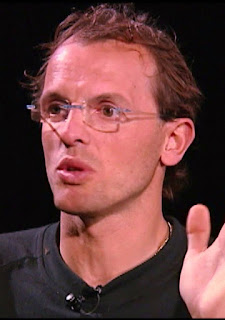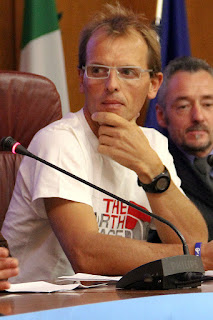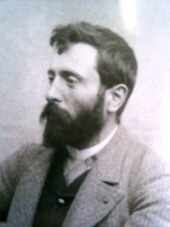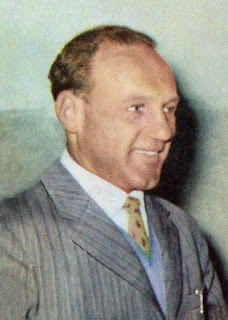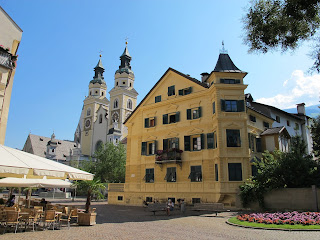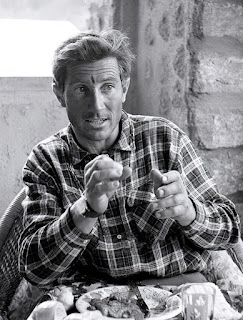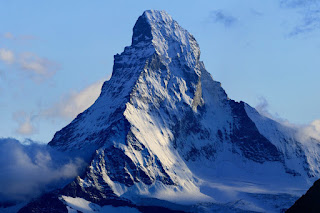One of history’s greatest female climbers
The climber Nives Meroi, widely regarded as one of history’s finest female mountaineers, was born on this day in 1961 in Bonate Sotto, a small town in the province of Bergamo, about 40km (25 miles) northeast of Milan.
Nives Meroi and Romano Benet have been
climbing together for more than 40 years
One half of a renowned husband-and-wife climbing team with Romano Benet, Meroi is one of only three women to have reached the peak of all 14 of the so-called eight-thousanders, the only mountains in the world that tower about 8,000m, topped by Everest (8,848m), which she conquered in 2007, and K2 (8,611), which she had scaled in 2006.
Meroi completed the full set of 14 when she reached the summit of Annapurna (8,091m) in the Himalayas in 2017. She and Benet, born in Italy but who has Slovenian nationality, are the first married couple to have climbed all 14 together.
The two first met more than 40 years ago in Tarvisio in Friuli Venezia Giulia, Benet’s hometown, situated in an Alpine valley close to the borders with Austria and Slovenia. Meroi, a student, was sharing a house with Benet’s sister. They began hiking and climbing together after discovering they had a common love of the mountainous scenery.
They were married in 1989, about 10 years after they met, with climbing central to the decision to tie the knot, Meroi confessing in an interview some years later that it enabled them to realise a dream, which at the time seemed out of reach, to go climbing together in the Peruvian Andes, on the Cordillera Blanca range.
 |
| Benet and Meroi have scaled the 14 highest mountains in the world |
With the Alps on their doorstep in Tarvisio, they had by then become seasoned climbers and it was not long after becoming husband and wife that they began to travel to the Himalayas. They attempted both Everest and K2 in the mid-1990s, without reaching the peak, before chalking off the first of the eight-thousanders in 1998, whey they successfully scaled Nanga Parbat, which rises to 8,126m in Kashmir. Meroi was the first Italian woman at the summit.
They had climbed two more off the list by the end of the decade before, in 2003, Meroi became the first female climber to complete the three eight-thousanders of the Gasherbrum Massif on the border of China and Pakistan. Their conquests of K2 and Everest in the next few years were notable for the couple reaching the summits alone, with no sherpas to help carry equipment, and without using supplemental oxygen.
Not surprisingly, given the risks involved with climbing, their lives have not been without drama.
In 2008, attempting a treacherous winter ascent of Makalu, at 8,485m the world’s fifth highest peak, Meroi was blown off her feet by a fierce gust of wind and fell between two boulders, breaking her right leg. With the help of another Italian climber who had accompanied them on the trip, Benet carried her down to a glacier 2,000m below where the incident took place, from which a helicopter took her to hospital.
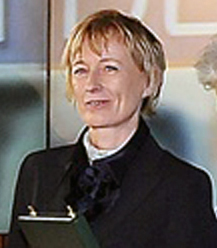 |
| Meroi is only the third female to climb all 14 eight-thousanders |
In the event, the decision to descend immediately and quickly was the right one. Benet was suffering from aplastic anaemia, an extremely rare condition in which the bone marrow fails to produce enough new blood cells. It took two years of treatment, including dozens of blood transfusions and two bone-marrow transplants, before Benet was well again, having been in grave danger of losing his life.
Undaunted, the couple resumed climbing. They succeeded at the third attempt to reach the summit of Kangchenjunga in 2014, scaled the peak of Makalu two years later and conquered the last of the 14 on May 11, 2017, when she and Benet arrived at the 8,091-metre summit of Annapurna, in north-central Nepal.
It made Meroi only the third woman to have climbed all the world’s eight-thousanders, after the Spanish mountaineer Edurne Pasaban, who had achieved the feat in 2010, and the Austrian Gerlinde Kaltenbrunner, who followed a year later. Kaltenbrunner and Meroi are the only women to have completed all 14 without supplemental oxygen.
Benet - almost 10 years his wife’s senior - had just turned 65 in May 2017. He became the 16th man to complete the set and the fourth Italian.
The couple still live just outside Tarvisio in what they describe as a mountain hut.
Travel tip:
The remaining apse of the former
Basilica di Santa Giulia
Bonate Sotto, where Neroi was born, is a small town of around 7,000 residents some 12km (9 miles) southeast of the Lombardia city of Bergamo within the so-called Isola Bergamasca between the Brembo and Adda rivers. It is best known for the remains of the Basilica di Santa Giulia, a 12th-century Romanesque basilica built on the site of a church that may have stood since in the seventh century. It fell into disrepair and was abandoned in the 14th century. The 12th-century structure had a nave and two aisles with three apses, with an interior was divided into five bays, of which only the last one preceding the apse area survives. The area outside the remains includes a cemetery.
Travel tip: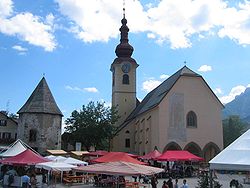
The market square in Treviso, with the
church of Saints Peter and Paul
Tarvisio, which has a population of slightly less than 5,000, can be found 7km (4 miles) from the Austrian border and 11km (7 miles) from Slovenia, in the Val Canale between the Julian Alps and eastern Carnic Alps. It is a popular base for both winter and summer activities. Its historic market, which used to open on Saturdays but now hosts stalls on weekdays too, attracts shoppers from over the border. Meroi and Benet live in an area of tiny Alpine lakes called the Fusine Laghi, just to the east of the town.
Also on this day:
1630: The birth of Ranuccio II Farnese, Duke of Parma
1688: The birth of Maria Luisa of Savoy
1944: The birth of mountaineer Reinhold Messner
